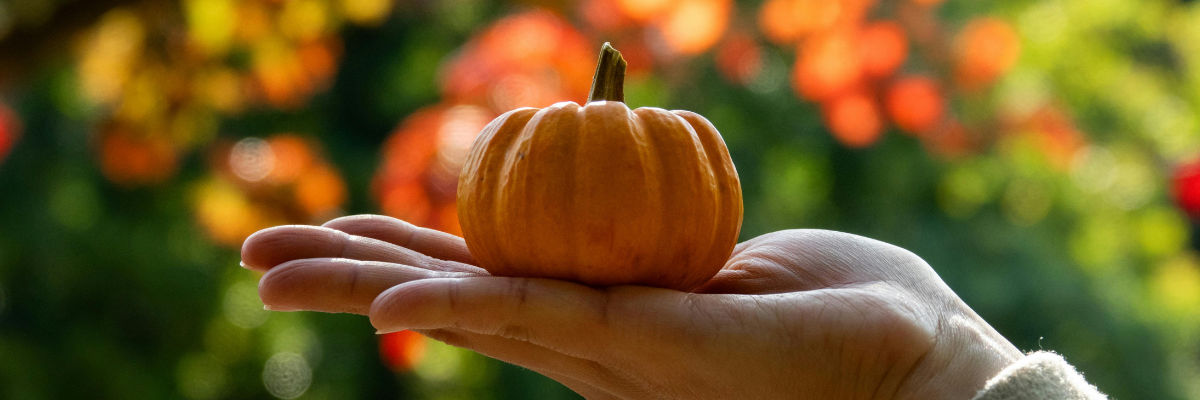
Ah, pumpkin spice—the undisputed flavor of fall! As soon as the leaves start to turn and the air gets crisp, pumpkin spice options start to pop up like crazy in cafes, grocery stores, and even beauty products. But why is a flavor so popular when the fall hits? What’s the story behind it? Well, let’s dive into the pumpkin spice origins, how it took over fall, and why we just can’t seem to get enough of it!
The Origin of Pumpkin Spice: A Little History Lesson
 Photo by Bradyn Shock on Unsplash
Photo by Bradyn Shock on UnsplashPumpkin spice didn’t just fall out of the autumn sky and into our lattes—its roots go way back. The original "pumpkin spice" blend has been around for centuries as a mix of cinnamon, nutmeg, ginger, and cloves (sometimes allspice, too). These spices were used in baking and were especially popular in fall desserts, like—you guessed it—pumpkin pie.
It wasn’t until the early 2000s that the flavor combo made its way into the mainstream, thanks to a little drink called the Pumpkin Spice Latte (or “PSL” for the superfans) from a certain coffee giant. Starbucks launched the PSL in 2003, and what started as a seasonal experiment quickly turned into a full-blown craze. People went wild for the mix of espresso, steamed milk, and pumpkin pie spices, topped with whipped cream and a dusting of cinnamon. Fast forward to today, and pumpkin spice isn’t just a drink—it’s a cultural phenomenon.
So, why do we love pumpkin spice so much? Well, there’s more to our obsession with it than just flavor.
It Tastes of Nostalgia
 Photo by Heidi Kaden on Unsplash
Photo by Heidi Kaden on UnsplashPumpkin spice brings us back to cozy fall memories. The spices used in the blend—cinnamon, nutmeg, and cloves—are the same ones used in holiday baking, so when we sip a pumpkin spice latte or bite into a pumpkin muffin, it instantly triggers those warm, fuzzy feelings of autumns past. It’s like taking a bite out of your favorite childhood memory of Thanksgiving dinner or baking with family.
It’s Seasonal (and We Love Limited-Time Treats!)
 Photo by Olha Maliar on Unsplash
Photo by Olha Maliar on UnsplashPart of the reason pumpkin spice is so popular is that it’s only around for a few months out of the year. That limited-time availability creates a sense of urgency—when it’s PSL season, you know you only have so long to enjoy it. It’s kind of like the McRib of fall but, you know, tastier. The scarcity factor makes us want it even more!
It’s Warm and Cozy in a Cup (or Snack)
 Photo by CURVD® on Unsplash
Photo by CURVD® on UnsplashFall is all about getting cozy, and pumpkin spice is basically the flavor version of a big, fuzzy blanket. The blend of spices is warming, soothing, and comforting. Whether it’s in a hot latte, a muffin, or even a candle, it’s the perfect thing to enjoy when the weather starts cooling down. We’re all just trying to get those hygge vibes, and pumpkin spice delivers that in every sip or bite.
It’s Everywhere—And We Mean Everywhere
 Photo by Ashley Kruse on Unsplash
Photo by Ashley Kruse on UnsplashPumpkin spice has gone way beyond just lattes. These days, you can find it in everything from cereals to creamers, candles to cookies, and even beers and spirits. There’s pumpkin spice popcorn, pumpkin spice ice cream, and even pumpkin spice dog treats! When something is this widespread, it’s hard not to get caught up in the trend. Once fall hits, pumpkin spice just becomes part of the atmosphere.
It’s Instagram-Friendly
 Photo by Priscilla Du Preez 🇨🇦 on Unsplash
Photo by Priscilla Du Preez 🇨🇦 on UnsplashLet’s be real—half the fun of pumpkin spice is snapping that perfect Instagram shot. The orange hues, the whipped cream peaks, the dusting of cinnamon—it all makes for a great photo op. When you grab your PSL or pumpkin spice donut, you’re not just indulging in a seasonal treat, you’re also part of the online celebration of fall.
Some Pumpkin Spice Foods and Drinks You’ve Gotta Try
 Photo by Diana Polekhina on Unsplash
Photo by Diana Polekhina on UnsplashWhile the Pumpkin Spice Latte is the OG, there are so many pumpkin spice treats to explore. Here are a few that should definitely be on your fall bucket list: pumpkin spice muffins, pumpkin spice pancakes, pumpkin spice popcorn, pumpkin spice beer… Okay, take a shot for every time we’ve said “pumpkin spice.” Just kidding, we don’t want to be responsible for alcohol poisoning cases!
So, there you have it—pumpkin spice is not just a popular flavor, it’s a whole mood. From its humble beginnings as a pie spice to its current reign as the king of fall treats, pumpkin spice has earned its place as the official flavor of the season. Whether you’re sipping on a PSL or enjoying a pumpkin spice snack, you’re getting a little taste of fall magic with every bite. Now, go get your pumpkin spice fix before the season is over!










 Photo by
Photo by 




 Photo by
Photo by 








